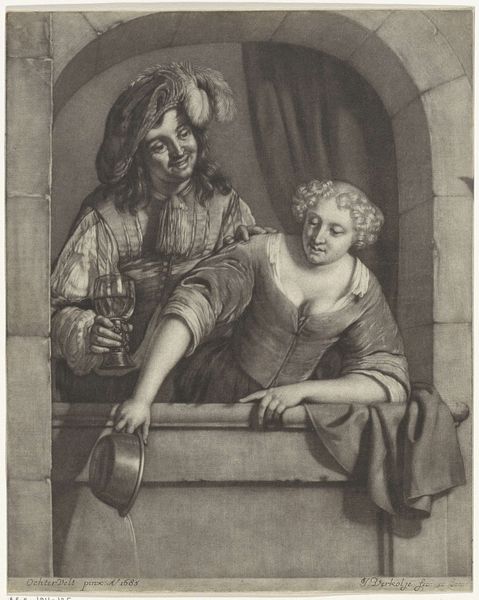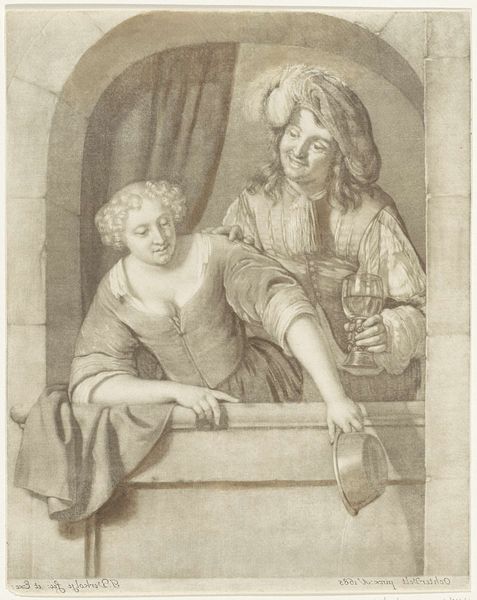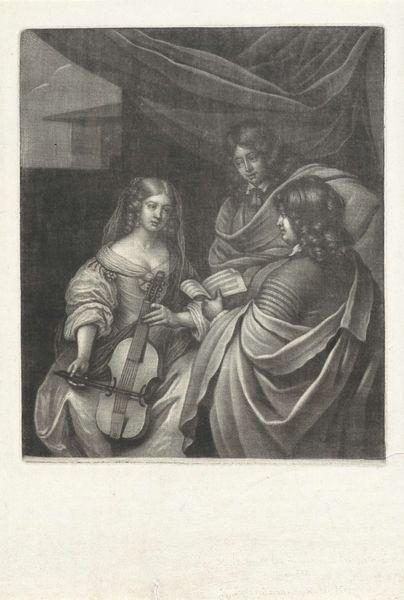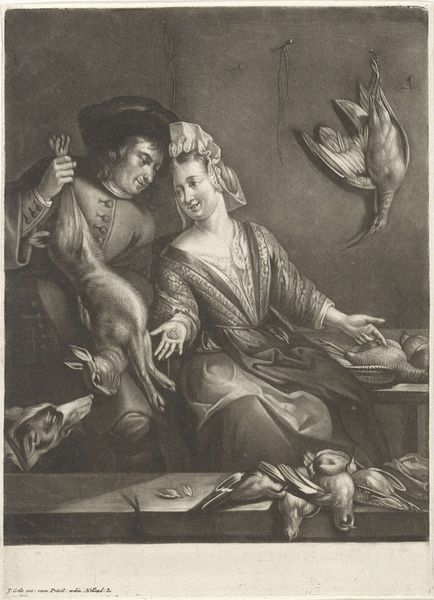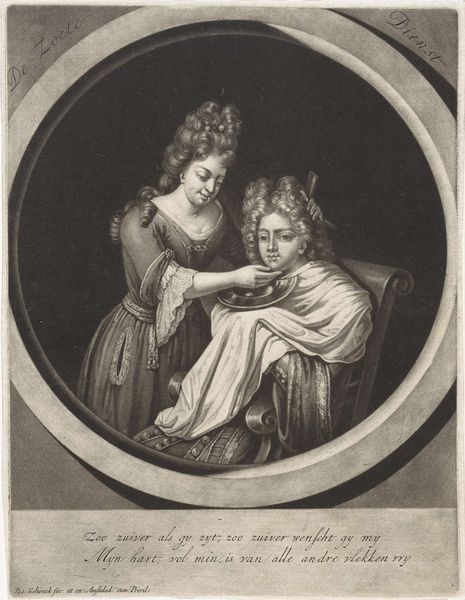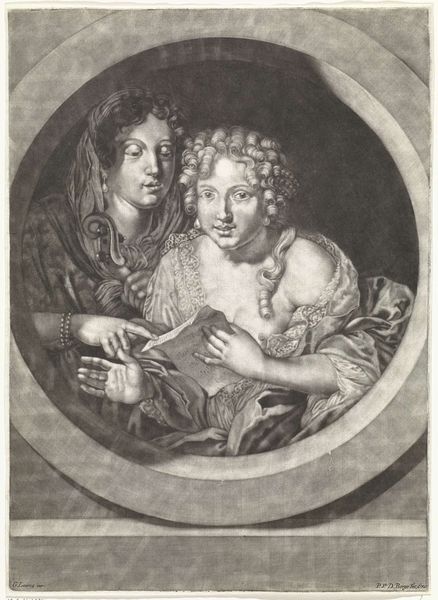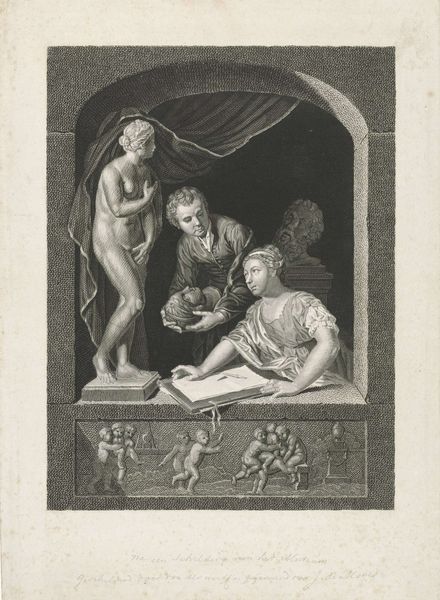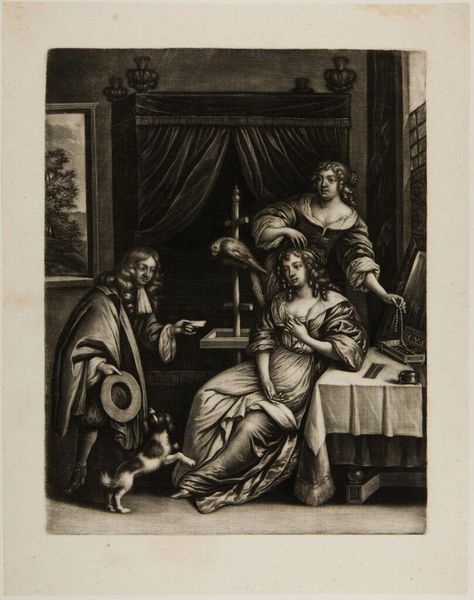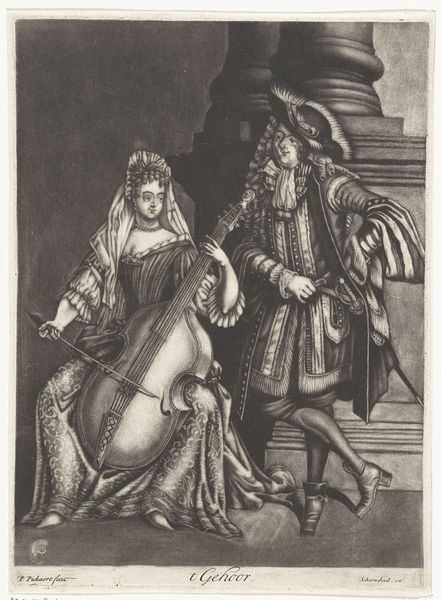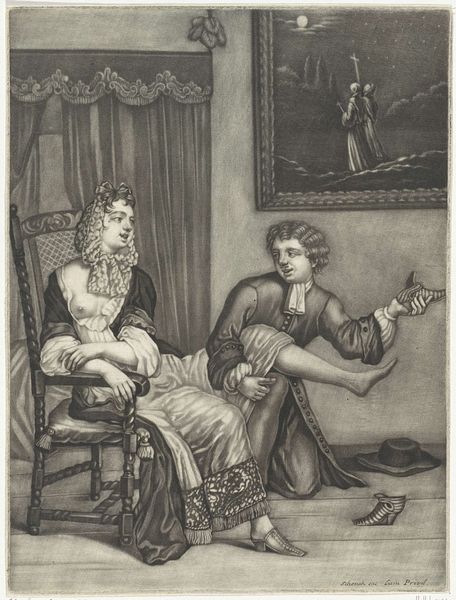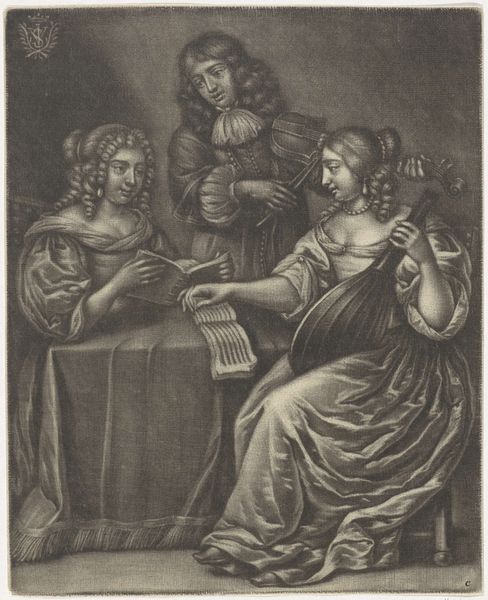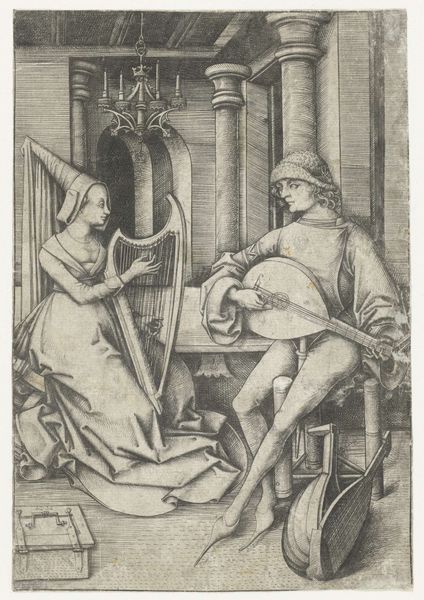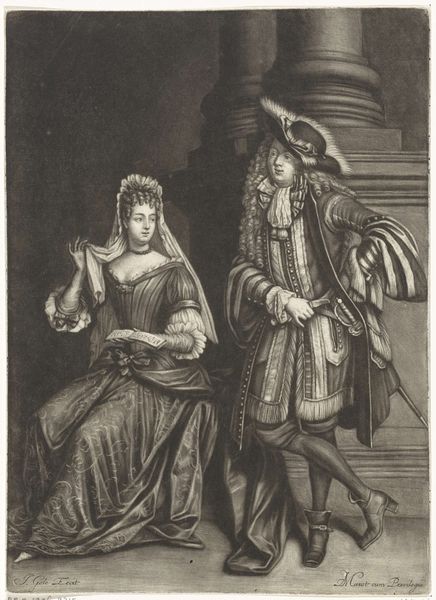
drawing, print, intaglio, glass, engraving
#
portrait
#
drawing
#
character portrait
#
baroque
#
dutch-golden-age
# print
#
intaglio
#
figuration
#
glass
#
portrait drawing
#
genre-painting
#
engraving
Dimensions: height 337 mm, width 248 mm
Copyright: Rijks Museum: Open Domain
Editor: Here we have Pieter Schenk's "Vrouw en man in een venster," made sometime between 1670 and 1713. It’s an engraving, and it strikes me as a really intriguing depiction of daily life. What can you tell me about the story being told by the materials and how it was made? Curator: Notice the intaglio technique and the glass medium, reflecting the Dutch Golden Age's preoccupation with detailed depictions of domestic life and burgeoning mercantile power. The etching process itself involves corrosive acids that would have required intense knowledge to manipulate. Editor: It sounds difficult. Is the work in the glass or the depiction more important here? Curator: I think the depiction provides the scene, but the materials are fundamental for understanding the context. Look at how Schenk represents glass in the image, a common product and medium for the Dutch elite. He implies luxury through painstaking details. What is your sense of this labor? Editor: I see a tension between luxury and accessibility. Prints allowed wider circulation, making art more available. Curator: Precisely. Intaglio printing facilitated the distribution of imagery to a wider audience, contributing to evolving notions of artistry and ownership, moving images out of elite spheres. Editor: That's fascinating! So it’s not just about the scene but about who could access the image, and what that meant. Curator: Absolutely! The intersection of artistic skill, production methods, and audience reception makes this print a perfect encapsulation of the era’s social dynamics. Editor: I never thought of engravings in terms of social accessibility and labour! This changes my perspective on how to approach art.
Comments
No comments
Be the first to comment and join the conversation on the ultimate creative platform.
